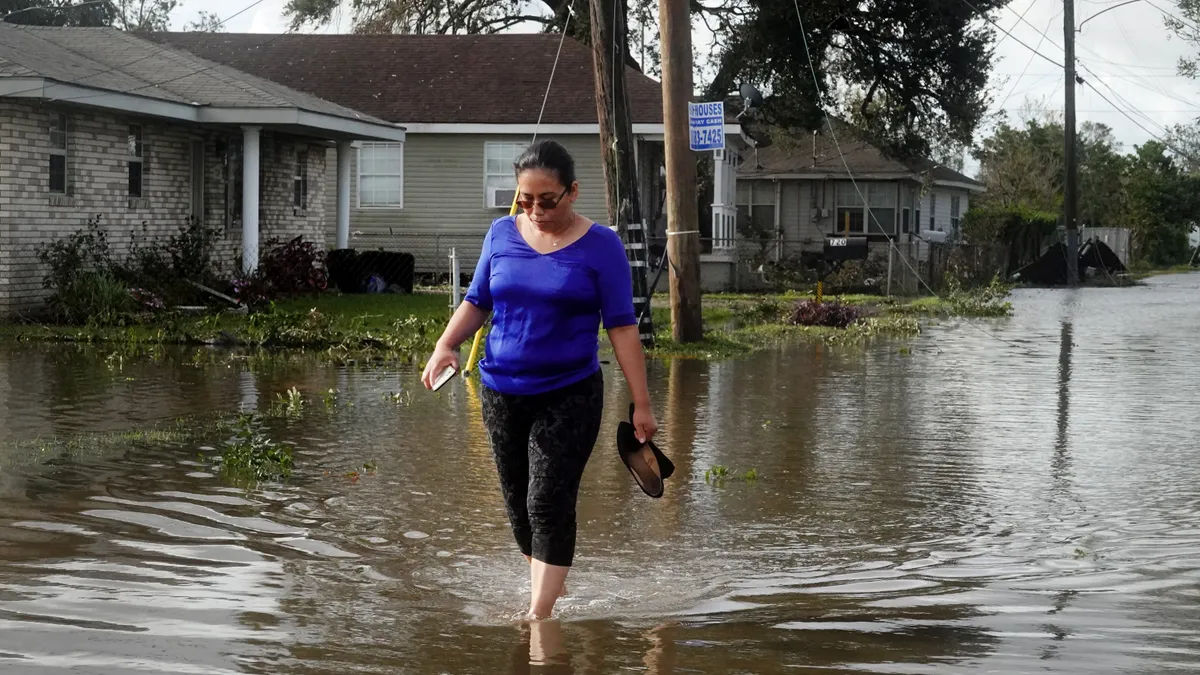Dive Brief:
- Following a $14.5 billion upgrade in the wake of Hurricane Katrina, the levees surrounding New Orleans that are tasked with protecting the city from another catastrophic flooding incident have held fast in the wake of Hurricane Ida.
- Ida made landfall in Louisiana Sunday afternoon at Port Fourchon as a Category 4 storm with winds of 150 mph, just short of becoming a Category 5 storm. Louisiana Gov. John Bel Edwards said on Monday during a briefing with President Joe Biden that without the reinforced levees, the situation in New Orleans "would've been a different story."
- Much of the devastation caused by Hurricane Katrina in 2005 was a result of the levees breaking due to storm surges, wind and excess water, causing more than 80% of New Orleans to flood, according to the city's Hazard Mitigation Plan website.
Dive Insight:
Even though Hurricane Ida spawned massive amounts of rain, power outages and other damage across the southeastern United States, the New Orleans levee systems appeared to hold.
Following Hurricane Katrina, officials pumped $14.5 billion into shoring up federal levees surrounding the city. That money went into improving levees, pumps, seawalls, floodgates and drainage systems, according to the Asociated Press. Most of the work, aside from three drainage projects, is complete. The system has successfully weathered multiple storms since its completion.
"The post-Katrina system is so different than what was in place before," U.S. Army Corps of Engineers spokesperson Matt Roe told the AP.
The system encompasses about 350 miles of barriers which surround the city and some of its suburbs, constructed of both earthen and concrete materials, according to the mitigation plan website. These barriers are made of:
- Sheet pile. A row of piles driven side by side to retain the earth or prevent seepage.
- Concrete I-walls. Concrete floodwalls with the concrete wall section cast atop a row of sheet piles driven through the crest of an earthen embankment.
- Concrete T-walls. These wall sections also cap a sheet pile curtain, but they get additional rotational and lateral stability from their broad concrete bases that form an inverted "T."
- Earthen levees. A low ridge of an earthen embankment built along the edges of a stream or river channel to prevent flooding of the adjacent land.
About 133 miles of levees were strengthened in the aftermath of Hurricane Katrina, according to the hazard plan website. The U.S. Army Corps of Engineers is responsible for the upgrades and maintenance of the levee system.
Other nearby communities, however, were not as fortunate in avoiding floodwaters. In the town of Braithwaite, Louisiana, for example, water breached a levee and video footage shows the town dealing with severe flooding.
Edwards said Monday that about 2 million people in Louisiana lost power in the storm, and that despite the levees holding, the damage in the state has been "catastrophic."













